This is an ANSCO Memo, a compact 35mm box camera that shoots 18mm x 24mm exposures on double perforated 35mm cinema film. The Memo first went on sale in 1927 and predates Kodak’s type 135 film format, using it’s own proprietary “Memo Cassettes” which can accept bulk 35mm film, but must be hand loaded in darkness. This particular example is a fixed focus model with a slower Wollensak Velostigmat lens, but there were other versions with full focus and faster lenses. The Memo was an inexpensive, easy to use, and very popular early film camera that started at $20 for a fixed focus model like this one, going up as high as $40 for one with a full focusing Bausch & Lomb f/3.5 lens and more advanced shutter.
Film Type: 18mm x 24mm 35mm Cinema Film
Lens: 1 5/16 Inches (~33mm) f/6.3 Wollensak Velostigmat uncoated 3-elements
Focus: Fixed, ~8 feet to Infinity
Viewfinder: Reverse Galilean Scale Focus
Shutter: ANSCO Leaf
Speeds: T, B, 1/25 – 1/100 seconds
Exposure Meter: None
Battery: None
Flash Mount: None
Weight: 384 grams
Manual: https://www.cameramanuals.org/agfa_ansco/ansco_memo.pdf
How these ratings work |
The ANSCO Memo is the perfect blend of an extremely old and basic camera that also is a ton of fun to use and makes really good images. Shooting 18mm x 24mm images in a vertically traveling 35mm box camera is an experience I recommend to any collector. These cameras are still relatively easy to find and are so basic that even in poor condition, will likely still work. Highly recommended! | ||||||
| Images | Handling | Features | Viewfinder | Feel & Beauty | History | Age | |
| 2 | 2 | 1 | 1 | 2 | 1 | 40% | |
| Bonus | none | ||||||
| Final Score | 12.6 | ||||||
History
Today, cameras shooting 18mm x 24mm exposures are considered “half frame” because they are half of a normal 24mm x 36mm exposure of a “full frame” camera. Back in 1927, when the ANSCO Memo was first produced, things were different. Early 35mm cameras used bulk 35mm cinema (or kine) film. This film was double perforated just like “regular” 35mm film that you’re used to today, but when used in cinema cameras, the film transported vertically and each image was 18mm tall and 24mm wide.
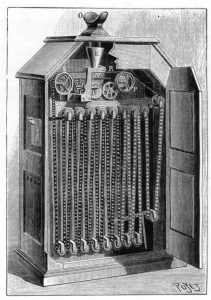
The first widespread use of 18mm x 24mm images was in a motion picture projector called the Edison Kinetoscope, developed by Thomas Edison and W. K. L. Dickson in the 1890s.
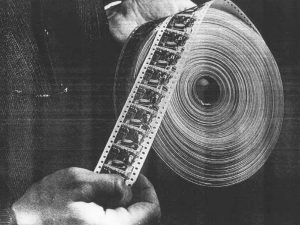
The 18mm x 24mm size was used as a side effect of the film stock that Edison had chosen to use in his projector which was 1 ⅜ inches (34.925mm) wide with perforations on either side. Since the image couldn’t overlap the perforations, the image was recorded in the middle part of the film which was about 24mm wide. Edison wanted his images to have a 4:3 aspect ratio, so that meant each image had to be about 18mm tall.
Edison’s Kinetoscope was very popular and inspired many other companies to make motion picture cameras using similar film stocks. As the 20th century started, more and more companies adopted the 18mm x 24mm image size and by 1909, Edison had founded the Edison Motion Picture Patents Company to define this type of 35mm film stock as the standard for all cinema cameras.
Around this same time, several inventors such as Jens Poul Andersen, a Danish inventor who in 1905 created a couple prototypes that would capture up to 300 still images on a roll of cinema film 20 meters long. Most of these early still film cameras existed in prototype form only and were not sold to the public, at least in high numbers, and very few are known to survive today. As with the experimental nature of prototypes, the exact film and image size of the exposures varied wildly.
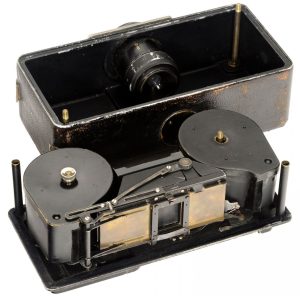
Over the course of the next two decades, a huge number of still film camera designs were made, some only in prototype form and some mass produced, that all used the same Edison cinema film and shot images in 18mm x 24mm, 24mm square, 24mm x 36mm, and many other sizes.
In 1913, Oskar Barnack while working for Ernst Leitz, would create a device that was intended to work as a cinema film tester. Barnack was asked to develop a motion picture camera for Leitz and in an effort to accurately calibrate the shutter of the motion picture camera to the film stocks of the day, he created what would later be known as the Ur Leica which could use a strip of cinema film and expose a single “double image” that was 24mm x 36mm in size for calibration purposes. The reason Barnack chose a larger image than that of a cinema camera is that 35mm motion picture film of the era was extremely grainy and could not resolve a lot of detail. This was less of a concern for motion pictures where each frame is only projected for a fraction of a second, but for still film photography where a single image could be analyzed, he wanted to see more detail.
The Ur Leica was never intended to be sold as a still picture camera, so when Barnack was done with it, it was shelved somewhere for about a decade. In the early 1920s, Ernst Leitz was still a successful maker of microscopes, but due to the weak German economy after their defeat in World War I, the company looked to expand their product offerings, and there became new interest in further developing Barnack’s tester into a full featured still camera.
The first Leica cameras would go on sale in 1925, nine years before Kodak would standardize the 35mm film format with their type 135 daylight loading cassette. In that time, other companies would continue to release their take on 35mm. Some went with double sized 24mm x 36mm images like Leitz did, and others stuck to the original 18mm x 24mm size.
In 1927 the ANSCO Company of Binghamton, NY released an unassuming box camera called the Memo, which used double perforated 35mm film creating 18mm x 24mm images. The Memo was designed by ANSCO employees, Carl A. Bornmann and Lew W. Lessler and the earliest prototypes found in US Patent documentation was filed in March 1926. This early version has a different design to the case and viewfinder, and a different location for the shutter release, but internally looks similar to the finished model. A second design patent from January 1927 looks almost identical to the finished model.
The camera ranged in price of $20 to $40 with a fixed focus Wollensak Velostigmat lens in the basic models and with optional lenses as fast as f/3.5 with full focusing abilities. Lenses by Wollensak, Bausch & Lomb, AGFA, and Ilex have all been found, some that can focus down to 3 feet, some down to 2. The Memo used proprietary daylight loading cassettes which could be purchased preloaded with enough film to make 50 exposures, or they could be reloaded with bulk 35mm cinema film. When adjusted for inflation, these prices compare to $300 – $600 for the camera and $7.40 for the film.

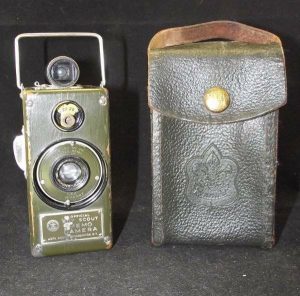
The AGFA Memo is most often seen covered in black leather, but there were a few bare wood examples sold, and one that was covered in Olive drab, sold as a Boy Scout model. The earliest Memos lack a shutter guard next to the shutter release, which caused the shutter to be easily tripped on accident. It is unclear as to exactly when this guard first appeared, but an ad for the camera from August 1927 shows it, suggesting that it was changed early on.
Along with the Memo camera, ANSCO also sold a projector called the Memoscope that for $19.50 could project positive images shot in the memo onto a wall, which in a way brings the cinema origins of the Memo full circle. The idea of a complete camera and projector solution allowing people to share their images on a big screen was not new to the Memo, but did predate the popularity of slide projectors in the 1950s and 60s.
The brochure below from 1929 promotes both the ANSCO Memo and Memoscope projector, summarizing each’s features. Interestingly, on the last page, it states that a customer could buy the base model Memo for $20 and then later upgrade the camera to have a better lens and shutter, only having to pay the difference plus a nominal fitting charge.
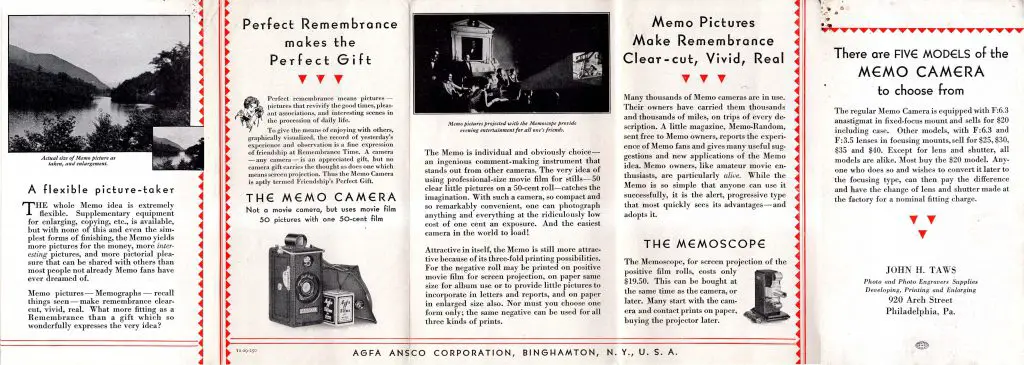
It is unclear exactly when the Memo first went on sale, but according to the book, A New Look at the Old 35, by Jack Naylor, he states that the first Memo instruction manual was dated November, 1926 and the the first advertisement for the Memo camera appeared in January, 1927 suggesting a release date around then.
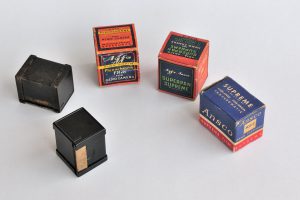
I also could not find any info about when the camera stopped production but my best guess was the very early 1930s as it does not appear in any catalogs or other promotional material after 1931.
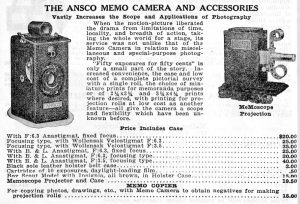
Edit 10/4/2022: Recently, I stumbled upon an ad appearing in Central Camera’s 1932 catalog showing the ANSCO Memo still for sale. Whether this hints that production continued through that year or whether this was surplus inventory still being sold, I cannot be certain. Interestingly, this ad shows the camera available with the Memoscope projector and six different kinds of lens combinations both from Wollensak and Bausch & Lomb.
It is said that the ANSCO Memo was one of the first American made 35mm cameras that received any widespread popularity. As I write this article, a quick search for examples for sale on eBay returns 12 results, which confirms that while uncommon, they aren’t rare.
In the years that would follow, the popularity of 35mm films continued to skyrocket, first with the Leica, then the Zeiss-Ikon Contax rangefinder, and then the Kodak Retina. By the end of World War II, Kodak’s type 135 daylight loading cassette was the dominant format of 35mm film, far out selling AGFA’s own Karat format.
Cameras that could expose full frame 24mm x 36mm images became the norm with only a handful of half frame 35mm cameras still in production by the end of the 1940s. In 1959, after the release of the half frame Olympus Pen, cameras that could shoot 18mm x 24mm images saw a resurgence in popularity, especially in Japan, where nearly every camera maker would offer their own half frame model.
Today, the ANSCO Memo is popular with collectors because of it’s distinct looks and operation, it’s reliability, and it’s stance as a historically significant camera. The camera’s simple and straightforward design means that assuming the camera wasn’t abused in it’s lifetime, chances are good that they can be shot today. Also, unlike other early cameras that used a proprietary film format, you can easily load regular 35mm film into the cassettes without having to adapt or modify anything, you just need to make sure you have two cassettes. The Memo is a very cool camera that can still be found cheaply today and one that I recommend to any collector.
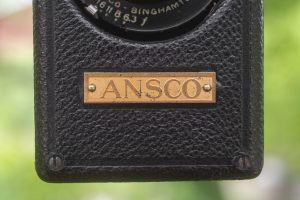
My Thoughts
I’ve shot 35mm cameras, I’ve shot half frame cameras, and I’ve shot box cameras, but I’ve never shot a 35mm half-frame box camera, that is until now. Of course as I explain earlier in this article, calling the ANSCO Memo a half frame camera isn’t exactly correct, but for the purposes of this intro, it works.
I had wanted to find an ANSCO Memo for quite a while, but the majority of the ones that I’ve seen come up for sale fall into one of two categories, in poor condition and expensive. I knew that in order to get a nice one, I might have to expand my purchasing options and be patient. Thankfully in the fall of 2019, I had the opportunity to pick one up for a very fair price.
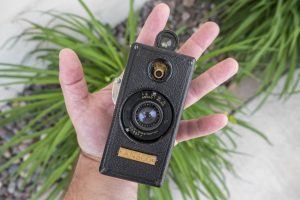
When the camera first arrived, my immediate thought was that it was much smaller than I expected it would be. I mean, I figured this wouldn’t be a huge camera, but most of the images of them online don’t do a very good job of showing it’s scale. The Memo fits into the palm of your hand and could very easily fit into a large coat pocket. The top mounted handle is a bit redundant as the camera is small enough and weighs so little, you really don’t need a handle.
Although made entirely of wood, the compact size means that weight is kept in check. Weighing a mere 384 grams when loaded with two cassettes and film and 325 grams without, you’ll likely not notice it in your bag as you carry it around. In fact, although I never did this, I would think that by wrapping a cord around the handle, this could dangle from your neck like some kind of “camera necklace”…just please don’t tell that to Kylie Jenner…
In addition to the handle on the top of the camera, the top of the camera has the large viewfinder tube and door release for the back of the camera. The bottom has a 3/8″ tripod socket, and the right side has the self-cocking shutter release and a screw that does nothing.

The shutter release on most Memos has a shutter guard behind it which helps to eliminate the possibility of accidentally tripping the shutter unintentionally since the act of cocking the shutter and firing the shutter is done with one single motion. This guard was not present when the Memo was first produced, so if you find one without it, then you have a very early example.
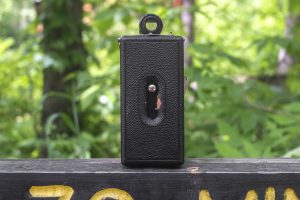
The entire back of the camera is removable, but on it is the film advance slide. The ANSCO Memo does not have any sprockets or a traditional film advance knob like a normal 35mm camera might.
Instead, inside the rear door is a spring loaded claw that grips the film using both rows of sprockets and pushes it from the supply cassette to the take up cassette. This spring loaded claw also doubles as the film pressure plate, keeping film flat while traveling through the camera. You’ll notice that on mine and nearly every Memo you’ll find, parts of the leather are scratched away from people’s fingernails as they use this lever.
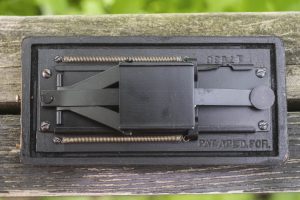
This is a design that AGFA would later reuse with the release of the AGFA Karat and it’s proprietary cassettes in 1936 which used a similar system, although in physically smaller cassettes.
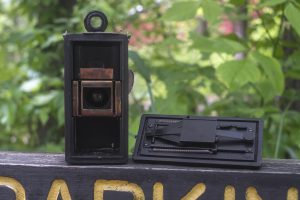
Removing the back requires you to simply slide the release catch on the top of the camera and then pull back on the wooden back.
The perimeter of the door has a somewhat deep channel that is used to keep light out of the film compartment. The Memo would not have originally come with any sort of felt light trap material, and with the types of slower film available at the time, none would have been necessary. This, combined with the relatively slow shutter on the Memo, I would not recommend the use of faster films as your chances of light leaks would dramatically increase.
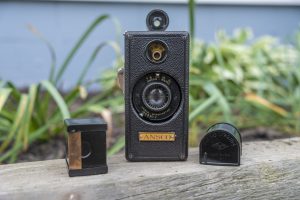
Back when the Memo was first produced, ANSCO and AGFA both sold preloaded metal cassettes with enough film for 50 exposures. The earliest cassettes were squared boxes, with later versions having a curved back. Both designs of cassette will work in any Memo, so as long as you have at least two of any kind, you can reload them yourself with regular 35mm film.
Reloading the cassettes requires total darkness as you’ll need to feed the unexposed film through the opening on one of the cassettes without exposing it to light. An entire length of film from a normal 24 exposure roll of 35mm film is enough for 50 exposures, but it can get tight near the end, so I recommend using a length of film that is a little shorter. If you have access to bulk film, cut a strip no longer than 3 feet in total darkness or you can simply use half of a normal 36 exposure cassette which in both cases will be good enough for about 30-35 exposures in the Memo.

There is no difference between a supply and take up cassette, so as long as you have two cassettes, just pick one to load the film into and in total darkness, start to feed the film into the cassette through the felt light trap. Do not try to open the cassette as they are not intended to be opened. Getting the film past the light trap might be a little tricky at first, but once you get past it, the rest of the film should feed in easily. There is no inner spool inside of the cassette so the film will just have to curl around itself as you feed more in. As I mentioned earlier, loading in enough film for 50 exposures is difficult as it gets tighter and tighter near the end, so I do not recommend trying to put that much in.
While feeding the film, make sure the emulsion side faces the correct direction and that you avoid touching the emulsion side with your fingers. If you want to be extra careful, I would recommend wearing lint free gloves, although I’ve done it without them and not had any problems.
Once you get near the end of your strip of film, leave about one to two inches out as a leader, and turn the lights back on. Keep the cassette out of direct bright light as you’ll want to load the film into the camera in subdued light. Insert the supply cassette into the chamber nearest the viewfinder and take your other cassette and begin to feed the leader into it the same way you loaded the first cassette. Insert enough of the film leader into the take up cassette to make sure that it will feed unobstructed while loaded into the camera.
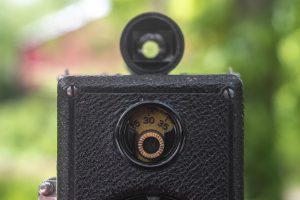
With the supply cassette inserted into the camera, and the film leader extending into the take up cassette, insert the take up cassette into the bottom chamber, leaving just enough room that it stretches across the film plane, without bowing. You’ll want to double check that the film can travel smoothly from the supply to the take up cassette by putting a mark on the film, putting the door on and advancing the film, and then removing the door to make sure it moved, but once everything is OK, the last thing you need to do is reset the exposure counter on the front of the camera by pressing in on the center of the dial and twisting it until you get to the first exposure.
Throughout this review, I’ve referred to the ANSCO Memo as a 35mm box camera, because it literally is a box-shaped camera, but where the Memo is unlike most typical box cameras is in the viewfinder.

A simple metal tube with two glass elements riveted to the top of the camera, the viewfinder differs from other box cameras in that it is very large and easy to see through. Normally in camera reviews, I don’t bother with a through the viewfinder image of a small, scale focus camera, but the one in the Memo is so gloriously large, I had to show it to you.
The image to the right shows a view through the viewfinder that is larger and brighter than many viewfinders found on cameras that were released decades after it. I had no trouble seeing the entire frame wearing prescription glasses without having to smoosh my face up against the back of the camera. To think that this is a viewfinder from a nearly 100 year old 35mm camera is quite impressive!
The ANSCO Memo is an attractive and compact camera with a lot of history. It has a very simple focus free interface that only requires you to set a shutter speed, advance the film, and fire the trigger. The viewfinder is larger than that of many cameras produced decades after it’s release, and with a decent Wollensak lens, it should be capable of some pretty terrific photographs. What could go wrong?
My Results
The Memo being reviewed here has a three speed shutter with speeds from 25 to 100. A very unscientific test of me looking through the lens while firing the shutter at all three speeds confirmed that each of the three speeds was different from another, suggesting that 100 was probably as accurate as any example I’f find, so for my first test in the camera, I chose some bulk Kodak TMax 100 that I have an abundance of. I thought that a 100 speed film with a wide amount of latitude would be an ideal first choice, as even if the shutter is dragging, I should still be able to get usable images after developing and scanning.
Having seen some sample images shot with ANSCO Memos posted in other reviews, I was hopefully optimistic I would get similarly nice images from mine. This being the first time I ever shot this 93 year old camera, and not really knowing if I had loaded the film correctly, I was a bit nervous when it was time to open the Paterson tank with the film after I had finished developing it.
As you likely already can see, I was elated to see that I had a whole roll of very nicely exposed and sharp images. After the film had dried and I was able to scan them, I was happy to see that I too, am a member of the “has gotten great results from an ANSCO Memo” club!
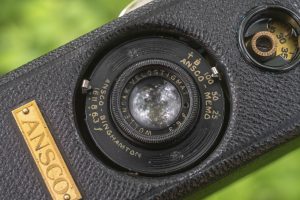
Cameras with Wollensak lenses have never ceased to amaze me. I’ve gotten great images from the Universal Mercury II, Revere Eye-Matic EE 127, and ANSCO Automatic Reflex 3.5, but this was the oldest, and most simplest camera I had used. Images were sharp across the frame with good contrast in both shadows and brightly lit scenes. Vignetting is evident in most images, especially those showing the sky, but it’s there in a very pleasing manner, adding to the “old timey” feel of these images.
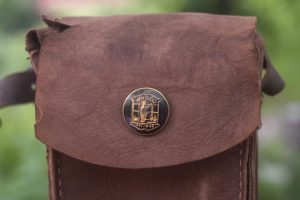
I shot most of the roll on a cloudy day, but even in direct sunlight, the camera performed well. I didn’t make any attempt to stress the camera with difficult shots or anything indoors, and I only used black and white film, so I can’t comment on it’s performance with color film, but from the results here, I feel pretty good declaring that the camera would deliver images consistent with other cameras with uncoated lenses.
The ANSCO Memo is far more portable than it’s box like shape might suggest, and with a huge and easy to use viewfinder and simple interface, shooting it is a joy. I loaded about 40 exposures worth of bulk film into the camera and I went through it very quickly. I often struggle with finishing rolls on some half frame cameras as it’s hard to re-program your brain to make the most of the smaller format, but that wasn’t the case with the Memo as I finished the roll in a single weekend.
I thoroughly enjoyed shooting this thing and look forward to taking it out again and again, and I think you will too. This is a must have in any collection for it’s age, unique looks, easy function, and excellent results!
Related Posts You Might Enjoy
External Links
http://camera-wiki.org/wiki/Ansco_Memo
http://www.vintagephoto.tv/anscomemo.shtml
https://vintagecameralab.com/ansco-memo/
http://elekm.net/pages/cameras/ansco_memo.htm
https://www.photrio.com/forum/threads/the-humble-1927-ansco-memo-works-great.141492/
http://www.earlyphotography.co.uk/site/entry_C512.html
http://web.archive.org/web/20090223133806/http://www.boxcameras.com/memowood.html

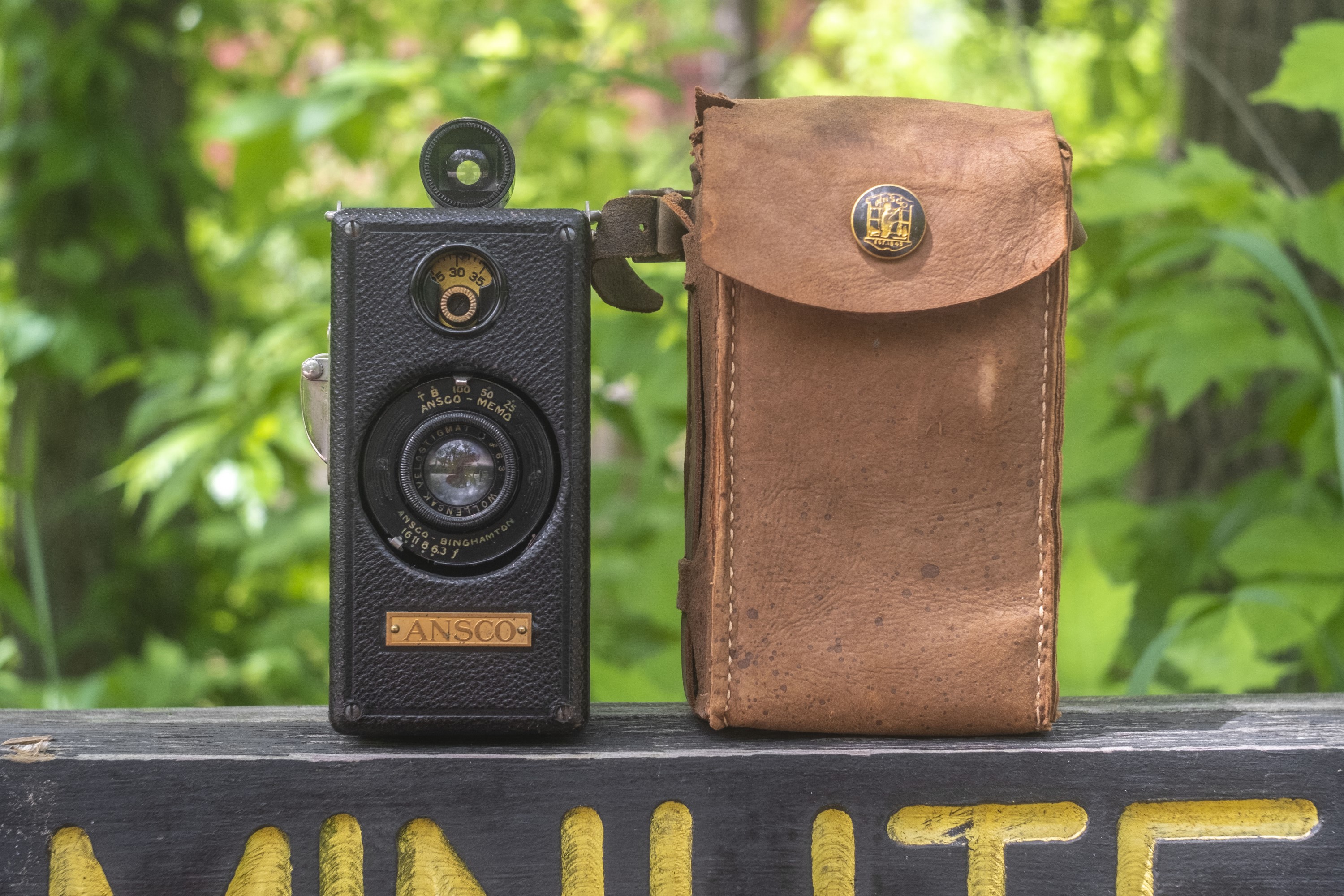
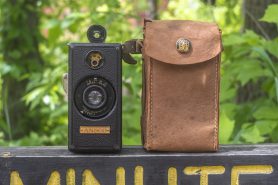
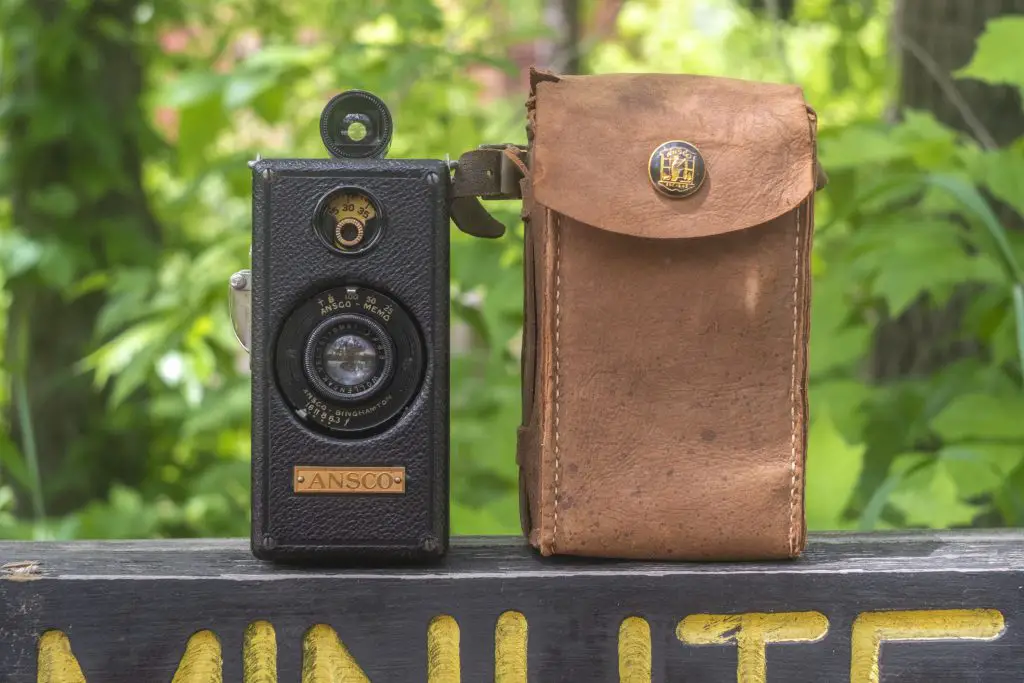
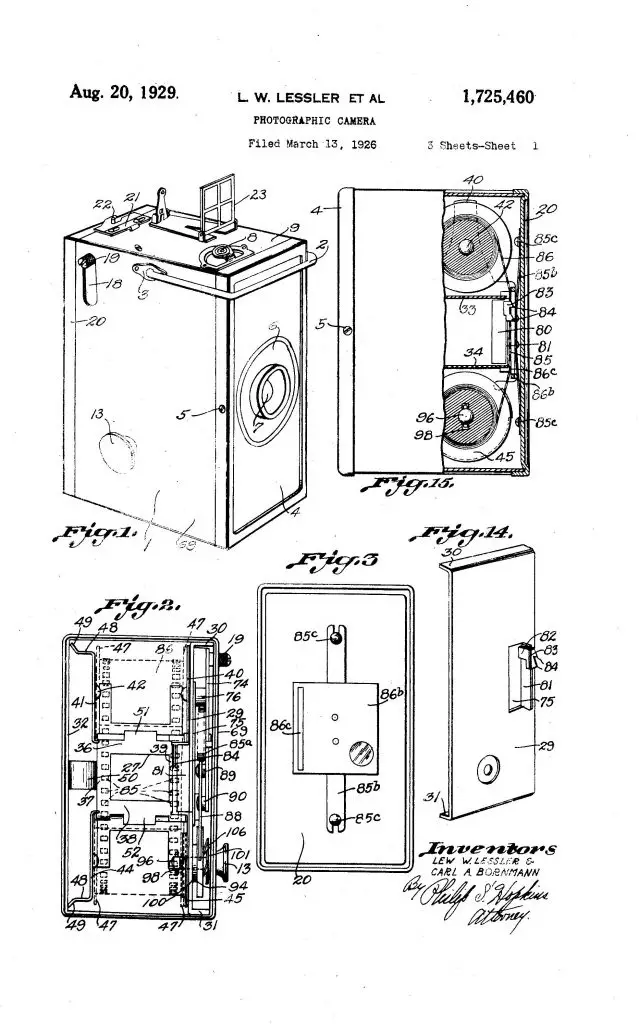
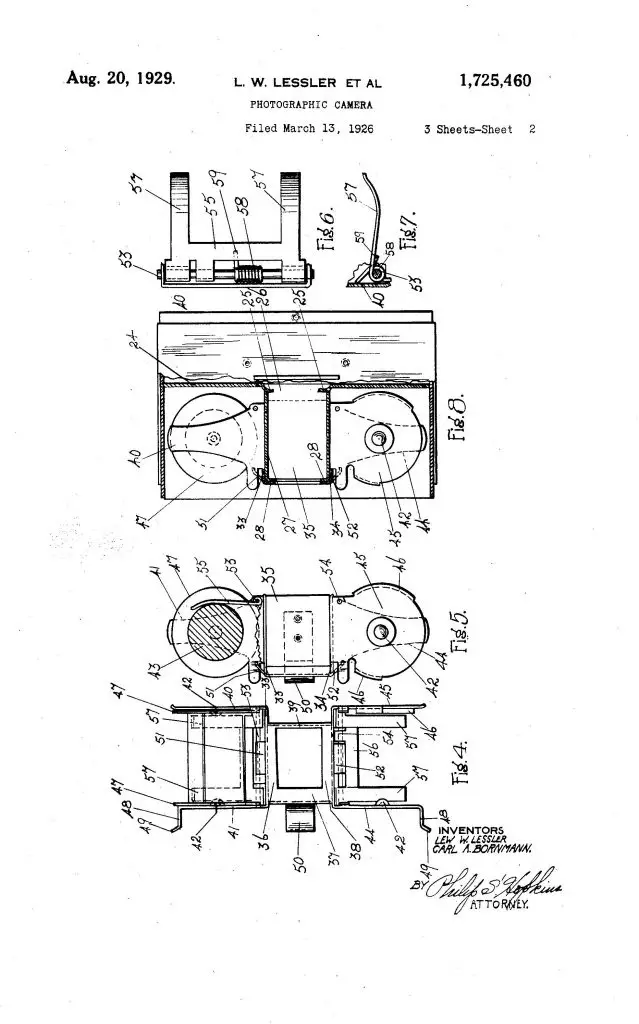

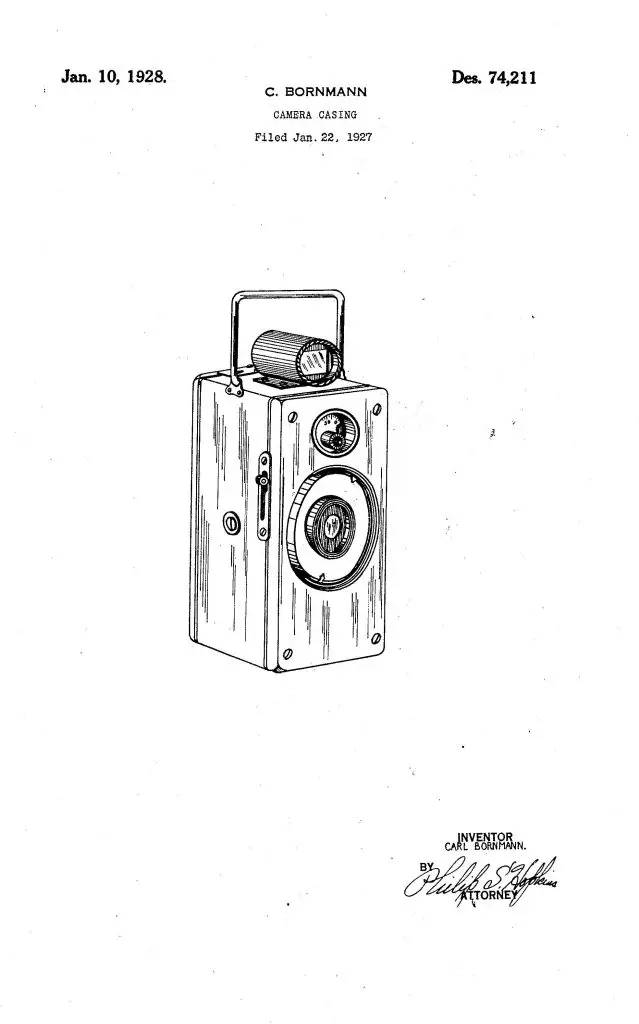
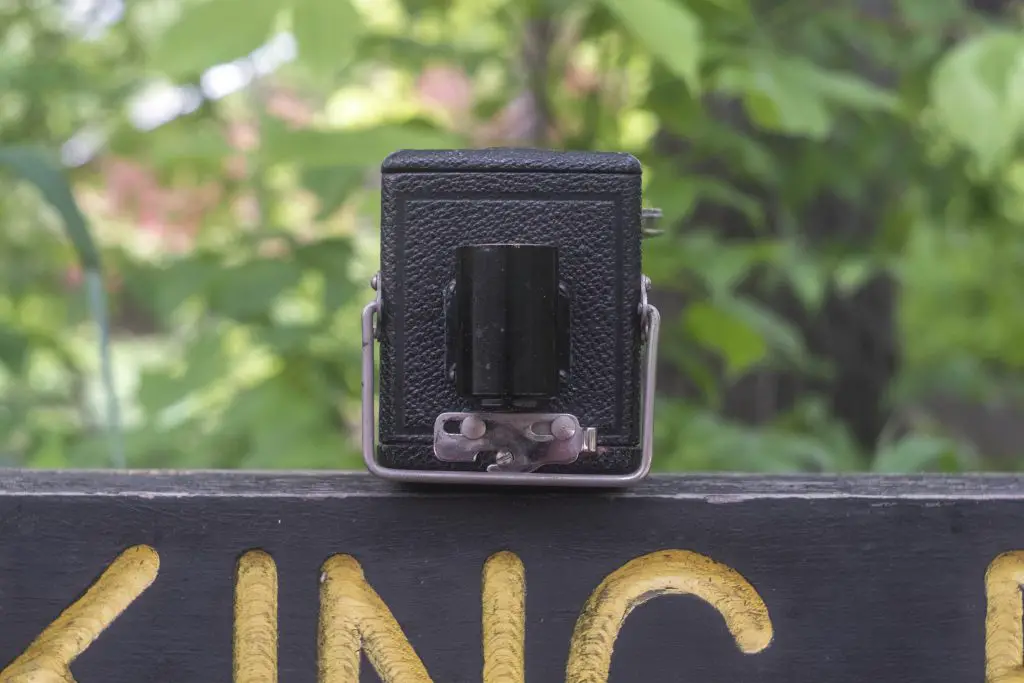
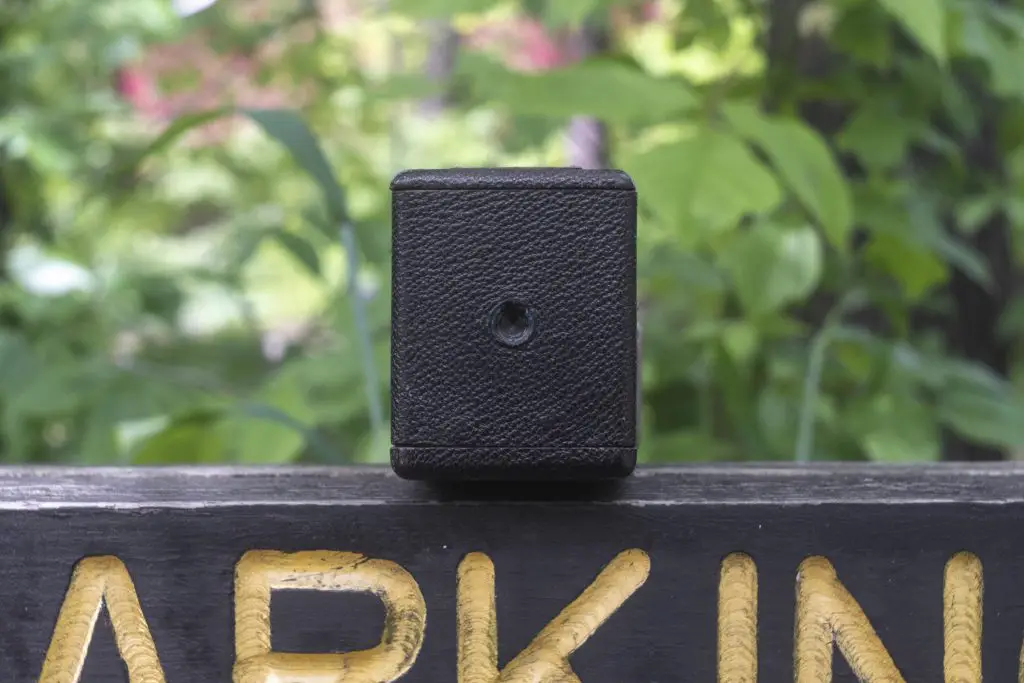
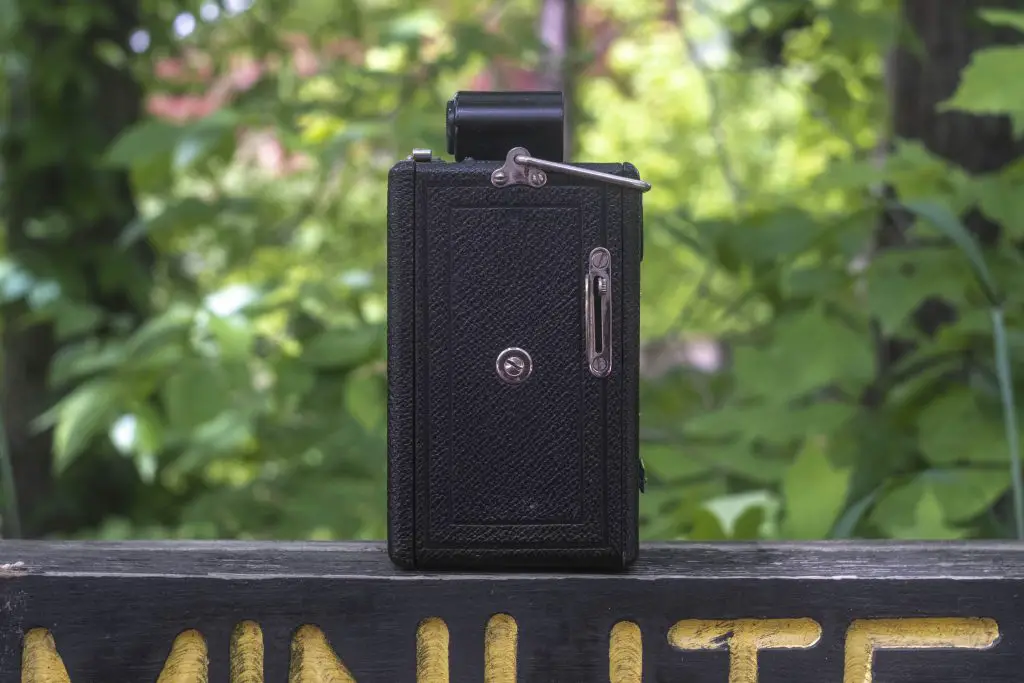











I owned, and used, this version first. Go ahead and open your wallet for the Bausch and Lomb version. It is, far and away, the most addictive antique camera I own. While there is no other way to describe photo results than…..MAGIC!, just hearing the shutter work at slower speeds is reward enough.
I recently bought one of these cameras, but the film cartridges were missing. If anyone is selling or knows where to buy a couple of them, please let me know. I’d love to shoot on this camera.
Email: [email protected]
IG: @obscura.vintage